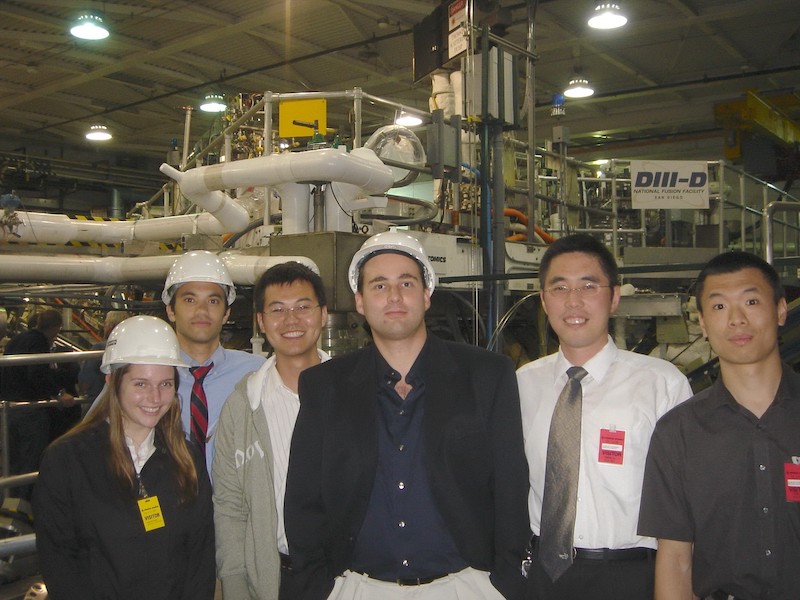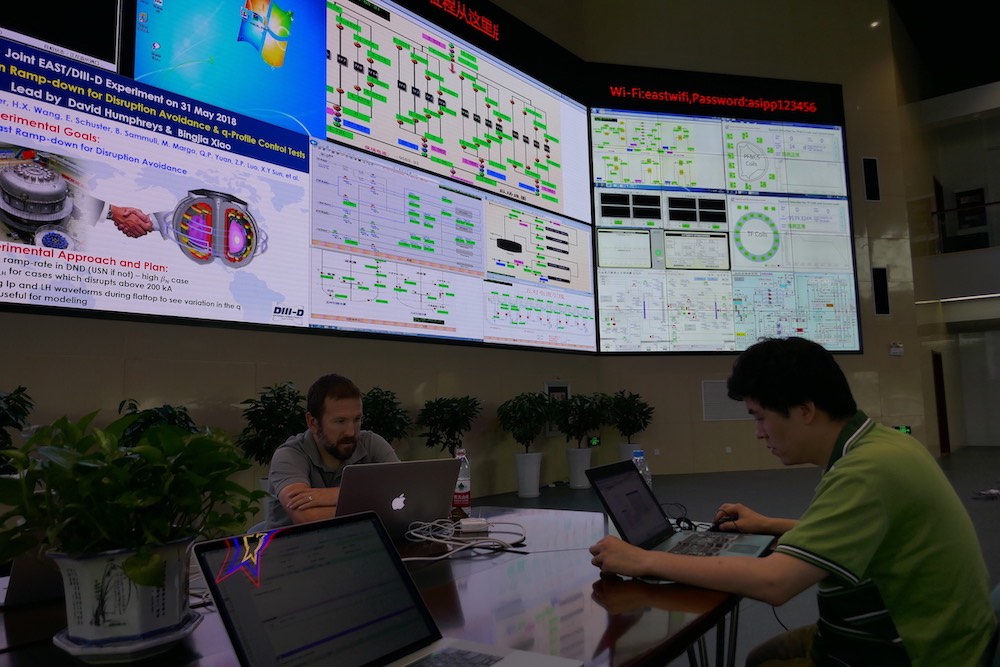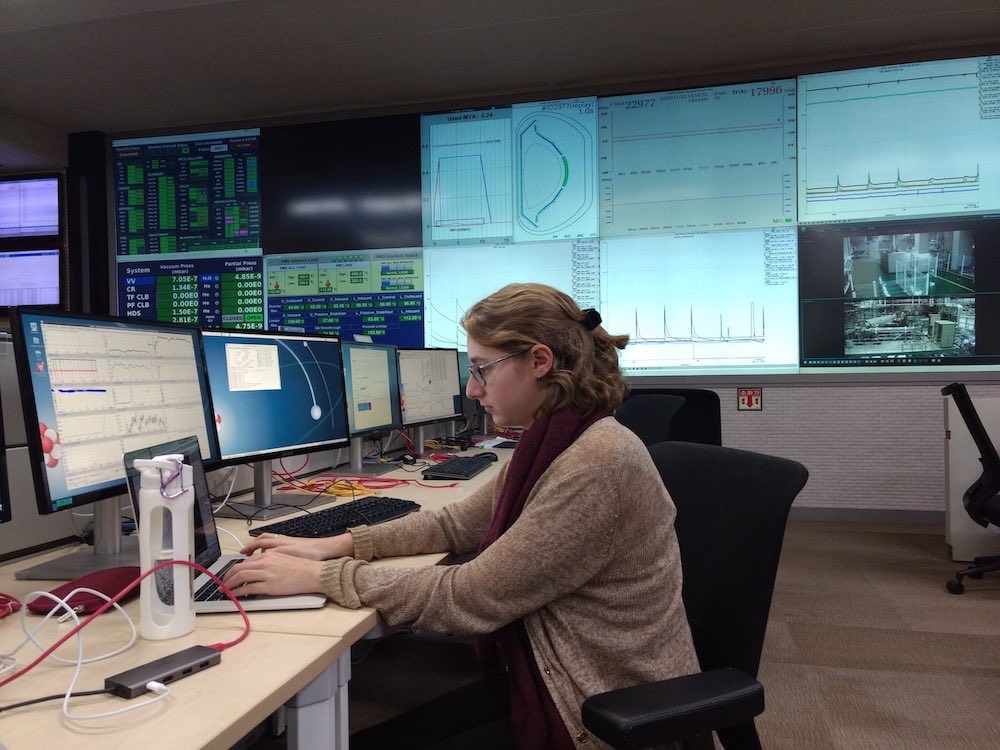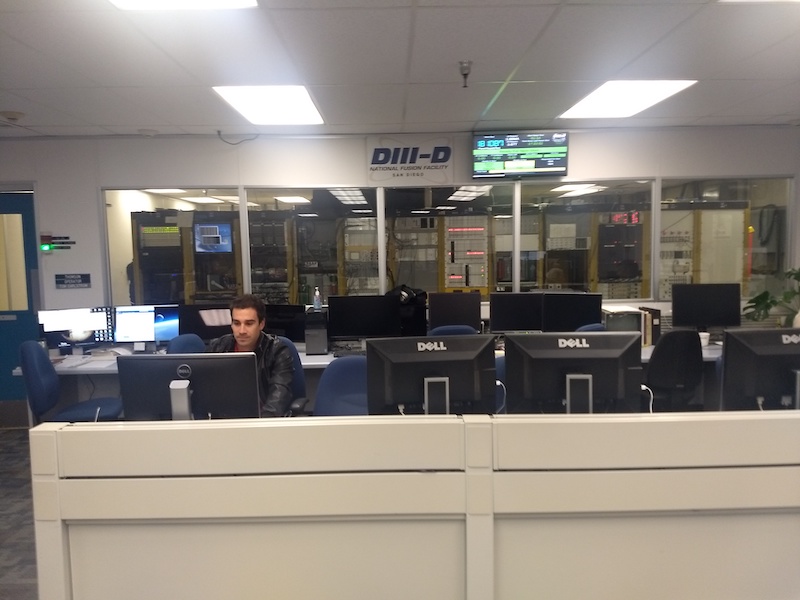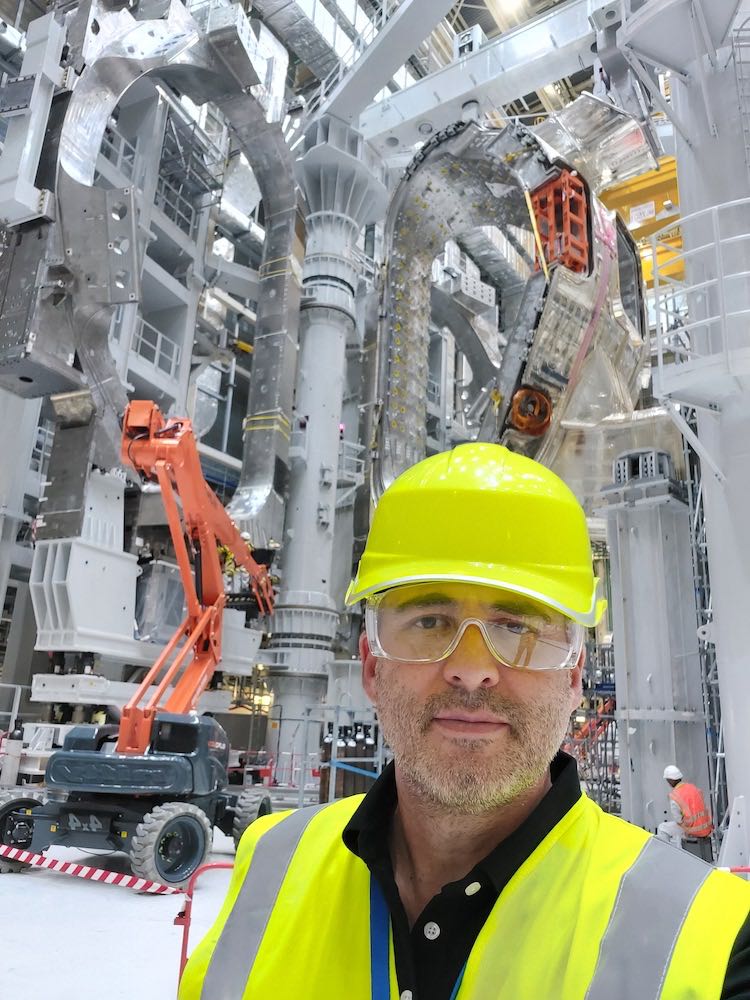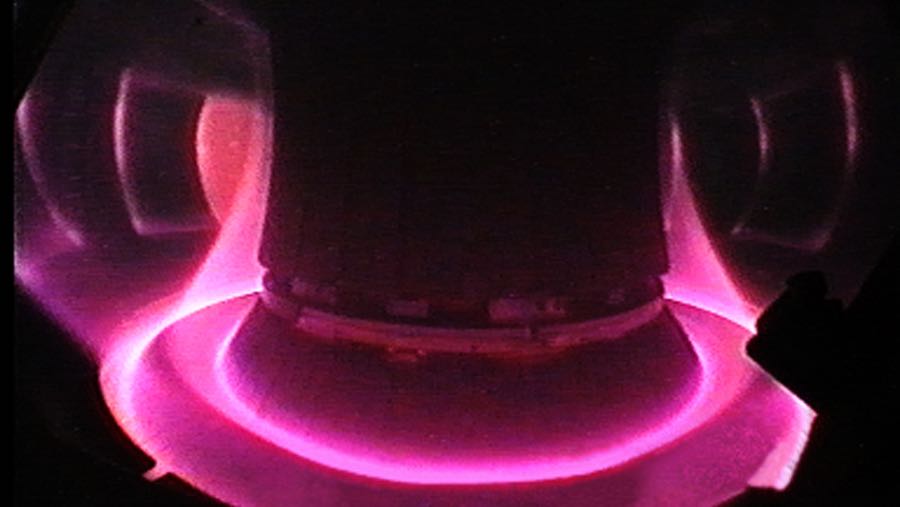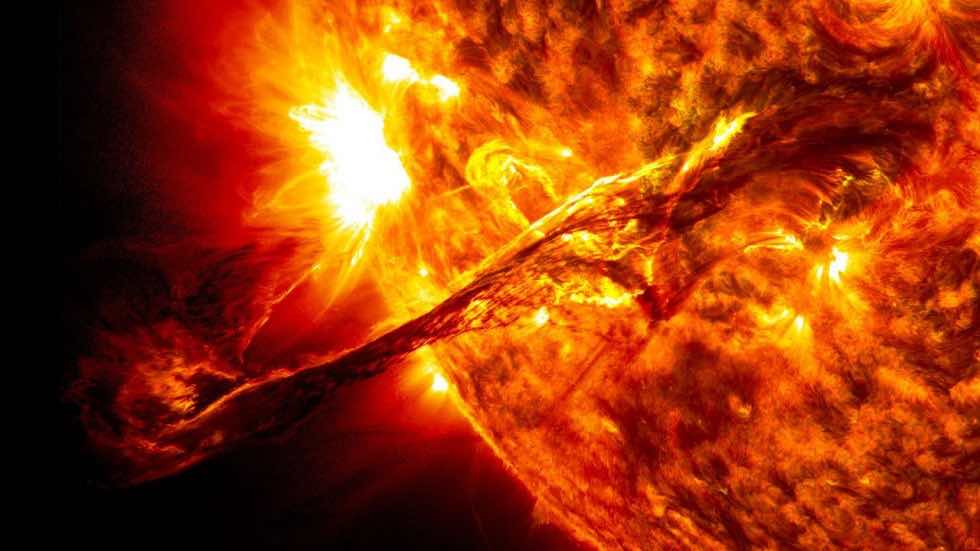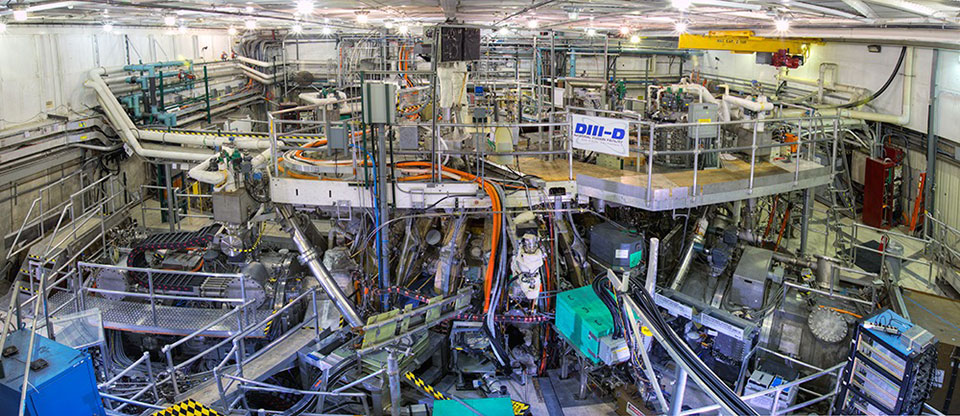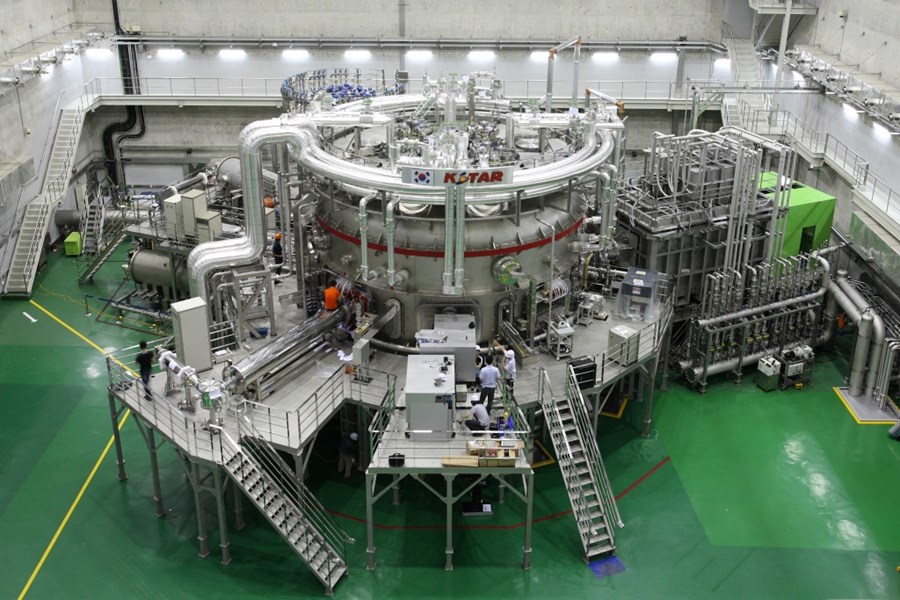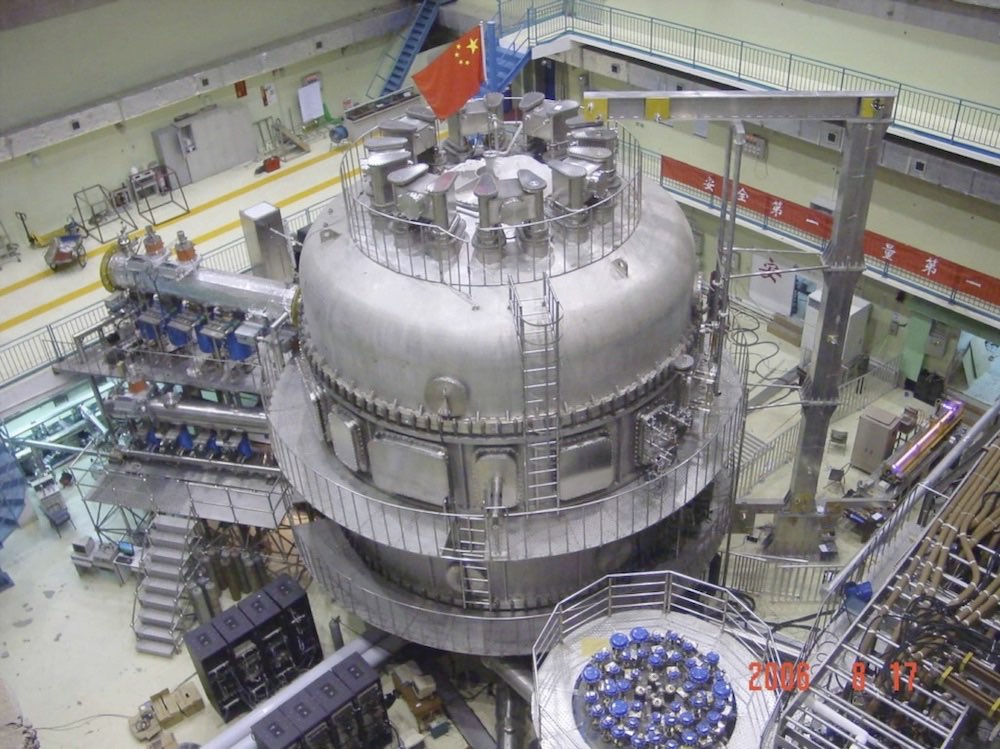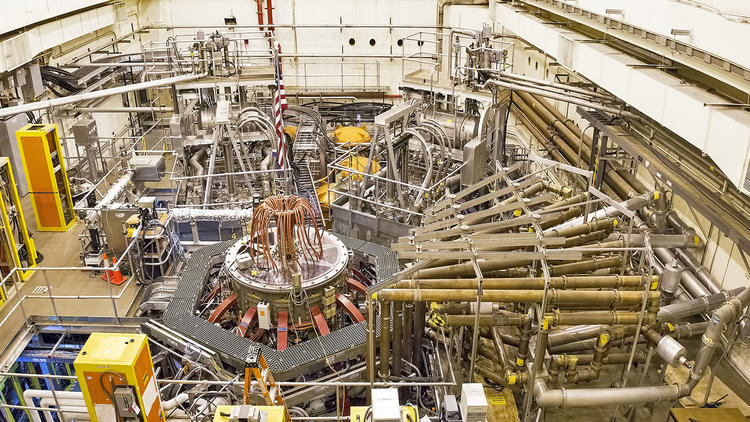While still a magnetic-confinement fusion device, the National
Spherical Torus Experiment (NSTX) is different from devices such as
DIII-D,
KSTAR, and
EAST in the sense that is based on the spherical
tokamak concept. Therefore, its aspect ratio A, defined as the ratio
between the major radius R and minor radius a, is lower than
conventional tokamaks.
NSTX has a major radius of 0.85 m, a minor radius of 0.68 m,
a maximum toroidal field of 0.3 T, and a maximum plasma current of 1.4 MA.
NSTX started operating in 1999 for the U.S.
Department of Energy at the Princeton Plasma Physics Laboratory in
Princeton, New Jersey. In 2012, NSTX was shut down as part of an
upgrade program and became NSTX-U (U for Upgrade). After a short
operation after the upgrade in 2016, NSTX-U was shut down to recover
from coil problems. While still in recover, NSTX-U sustains a
vigorous research program focused on:
1- exploration of the capability of the spherical facility to
produce stable, high-performance plasmas with low-cost magnetic fields.
2- development of the understanding and tools required to start-up
and sustain such plasmas non-inductively, meaning without what is
known as a “solenoid” magnet to start the process.
3- development of techniques to handle and control the waste heat
from fusion reactions.
As one of the collaborating institutions, members of the LU Plasma
Control Laboratory are permanently stationed at the Princeton Plasma
Physics Laboratory.
